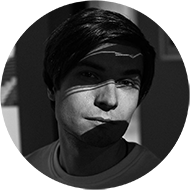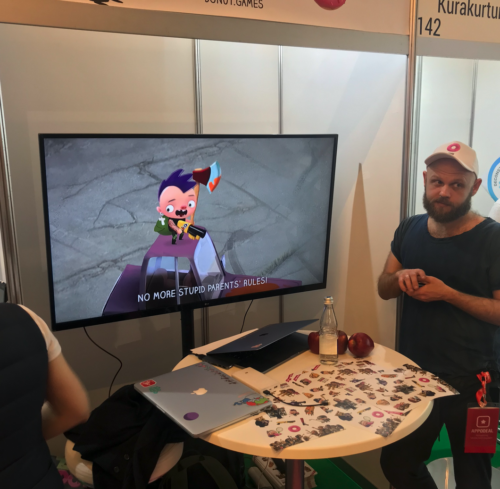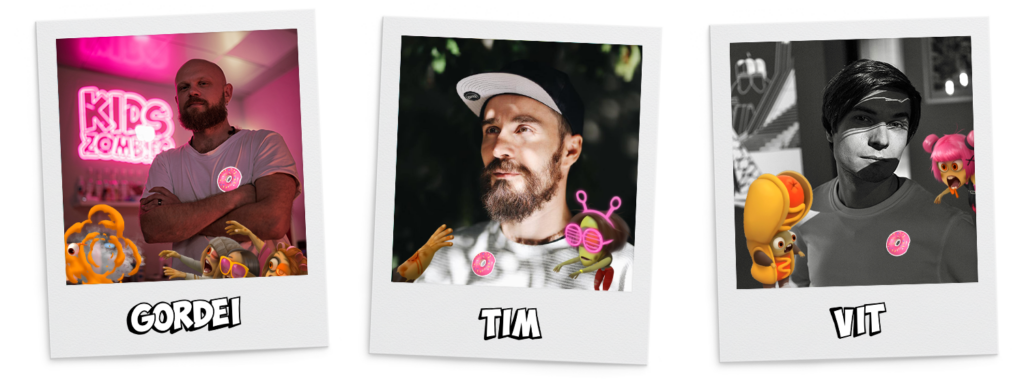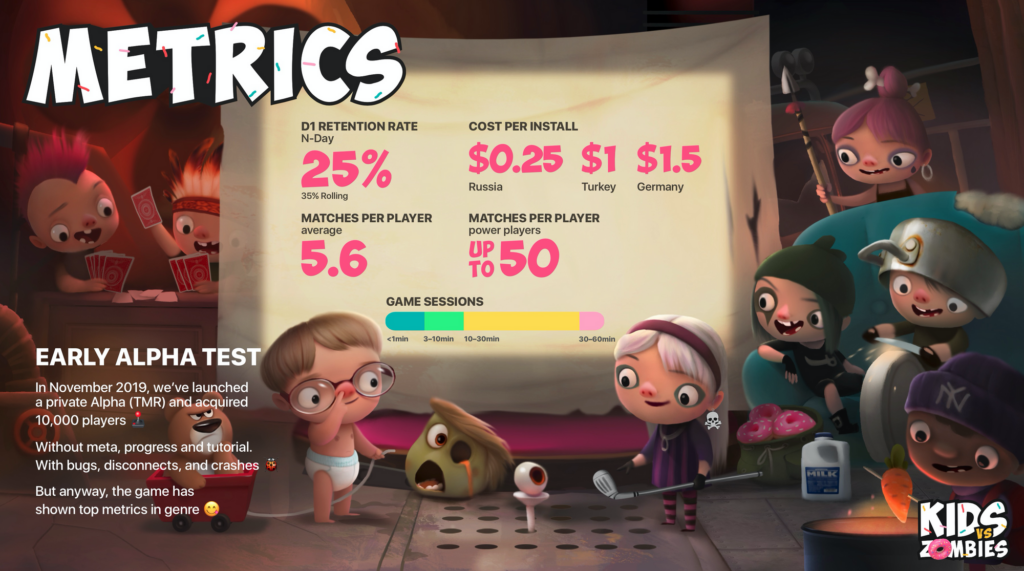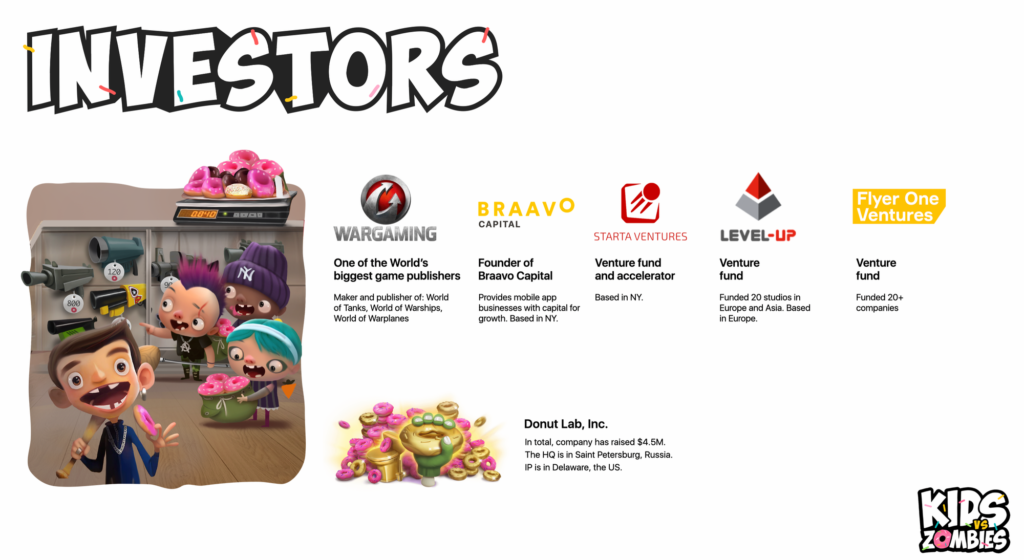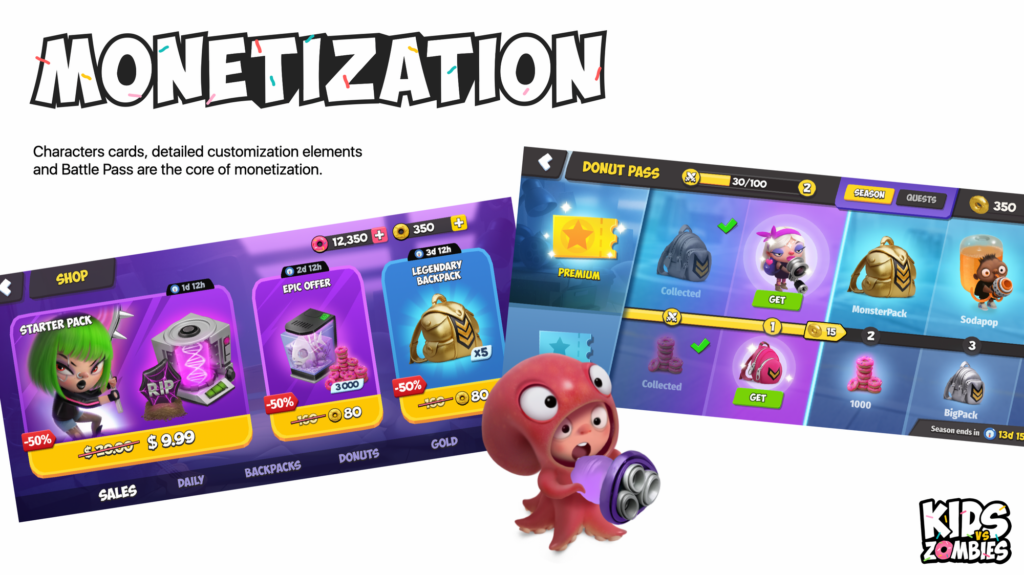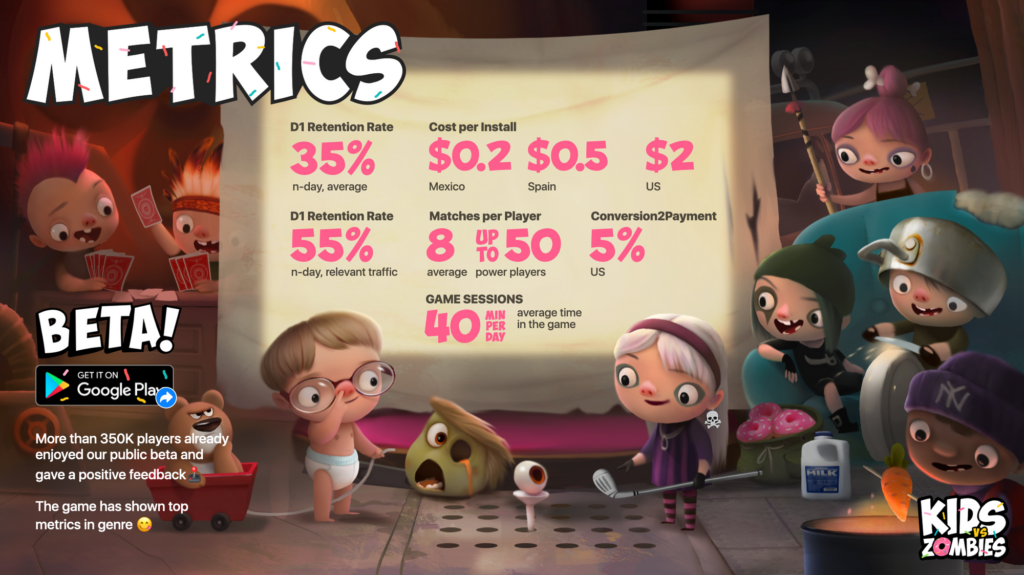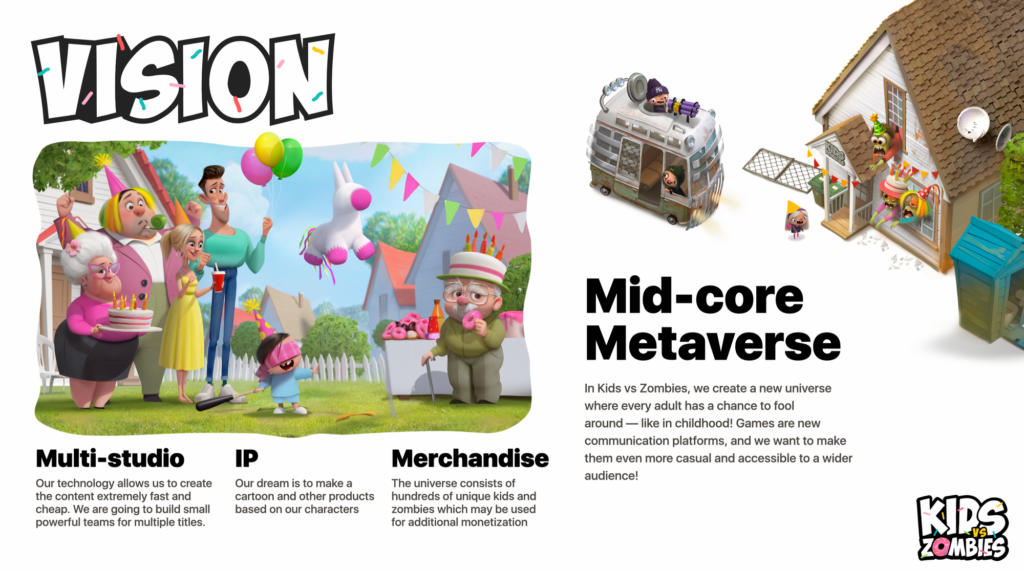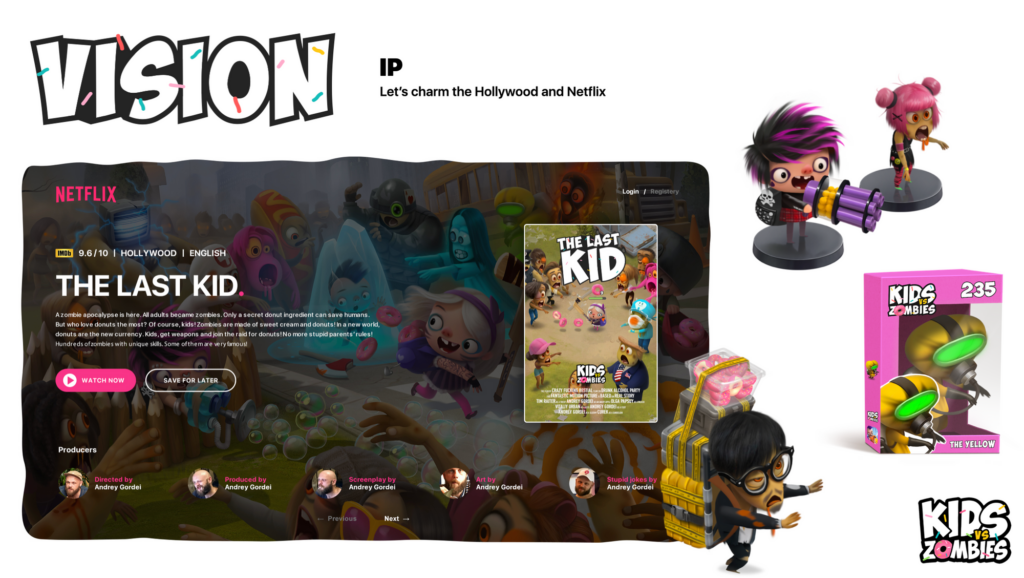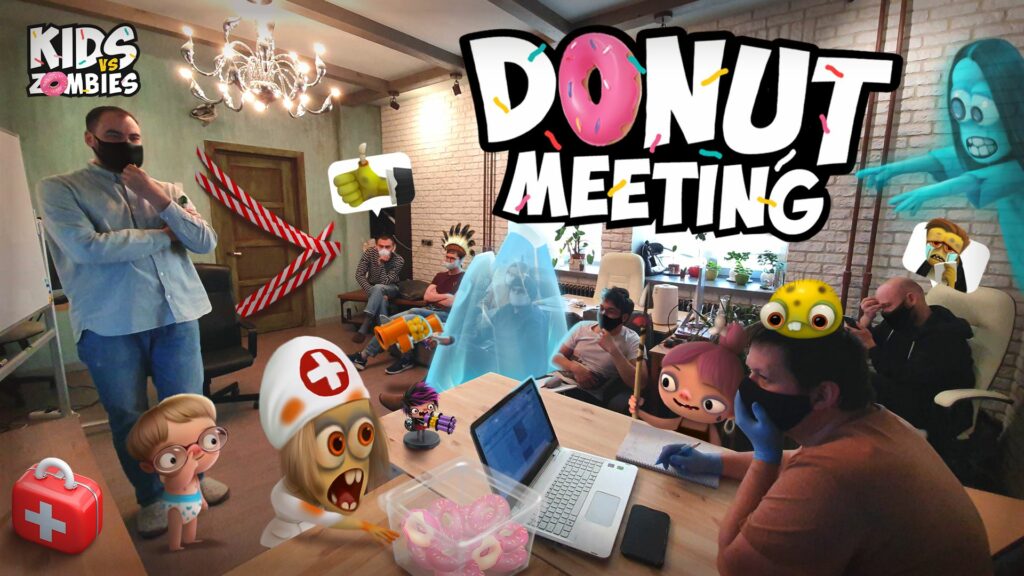How Donut Lab raised $4.4 million to develop the game. Investment case
During four rounds, the Russian Donut Lab team “raised” almost five million dollars to create the Kids vs. Zombies game. How it was,” said Vitaly Urban, co—founder of the studio.
Vitaly Urban, Co-founder of Donut Lab
The uniqueness of our history lies in the fact that we started successfully attracting investments without even having a prototype. In 2018, when we decided to make our first game, we only had a general vision of the project.
Usually everything happens differently. The canonical scenario, as a rule, sounds like this: a team gathers, it makes a playable build, brings it to a small local market and starts looking for money to scale it.
There is much less talk about investing under the concept in the gaming industry (four years ago, that’s for sure). Potential partners wanted us to have already launched a project with specific metrics.
When we said that we had nothing on our hands, the interlocutors almost twisted their finger at the temple. They say, “Guys, you don’t understand how everything works here. You can’t do that. It’s crazy.”
Andrey Gordeev humbly accepts another rejection from investors at our first White Nights Conference in 2018, Moscow
We didn’t listen to them. By that time, we had already raised funds in the USA, however, in a different niche — non-gaming IT. Therefore, we knew that it was possible to find funds without the product on hand. The main thing is a well—worked team with expertise and vision.
And we were right in the end.
About the team, ambitions and savings
Here it’s time to stop and tell a little about who it all started with. At the start — in 2018 — there were three of us: Andrey Gordeev, Tim Reiter and I, Vitaly Urban. Now the team is much bigger, but the core is the same.
Andrey, as the general director of the studio, is responsible for the product and its visual side, and Tim and I are responsible for business development, process building, marketing and management.
Before that, none of us had anything to do with the gaming industry directly. The most relevant experience was with Andrey, who participated in the creation of the Green Riding Hood children’s app. However, he became famous long before that as a commercial illustrator. His portfolio includes works for Coca—Cola, McDonalds, Heineken, Nike and other brands.
As for Tim and me, we launched Hello Baby before working on Kids vs. Zombies. This is a mobile ecosystem for parents and pregnant women. We have passed the acceleration in the USA. In its course, we just figured out how the venture market works. Before that, we worked in agencies with Pampers and Huggies brands.
Despite the fact that we had no gaming expertise, we believed that we would acquire it in the course of development. We had plans to create an isometric mobile PVP shooter made in a unique recognizable style.
At the same time, we understood that such a project could not be done “in the garage” by the efforts of a small independent team. It requires a large number of full-time developers, which means serious funding.
Spoiler: at the very beginning of development, money almost instantly ran out, despite the monstrous optimization of costs and the presence of a production team in St. Petersburg.
For understanding: in the first year, almost $800 thousand was spent on development, taking into account the grants received, although we saved on everything we could. For example, the website of the donut project.games was made by the founders on Readymag and cost $0.
To talk about grants: at first we tried to knock them out from everyone and for everything. We received $50,000 from DigitalOcean, then $100,000 from Amazon and the same amount from Google. In parallel, they also raised $50,000 from Amplitude as a grant and even opened a credit line from Facebook.
It is important to receive grants not only from the point of view of budget savings. For investors, this is an indicator that you are trying to optimize costs, which means that you take care of the available resources. Investors appreciate it.
The attentive reader has probably already managed to ask the question: where did $800 thousand come from if we raised $300 thousand as part of non-refundable grants? And in general, when will they finally tell about millions of dollars?
It’s time to talk directly about investments and how we managed to attract them.
Pre-seed
The pre-seed round amounted to $150 thousand thanks to venture angels, which we managed to find among our network.
It is important to understand: it is relatively easy for experienced founders to attract the first round in general. However, at that time it was still a big victory, since we only had a presentation, and we hadn’t even started working on the prototype yet.
How did we convince investors to believe in us?
We had strong trumps.
1. Unique visual style
Andrey’s art, as well as his overall experience in the production of the world’s leading brands, made it clear that the game would look like a potential hit.
2. The experience of the founders in launching other projects (including in the USA)
It is very valuable if the founders “saw some shit”: risked, lost, contacted unreliable partners and publishers, crossed the Atlantic to try their luck in the Valley without clear prospects, passed acceleration programs and lived on $500 in California. Publications about our previous projects in the media also played a big role, as well as awards received like the Best of the Year App from Apple.
3. Registration of a company in the USA and competent IP registration
The importance of this point is known to every startup who has tried to raise funds. However, in the gaming industry, for some reason, this is often forgotten.
4. Attracting celebrities as co-founders
At the very beginning of development, at one of the conferences in Los Angeles, we met actor Danny Trejo (Machete). Communication started, and at some point we decided to make him the co-founder of the studio and the face of the project.
Later we realized that a star on board (even so positive) is a heavy burden, especially for a startup. Firstly, it is very expensive. Secondly, it immediately introduces a lot of plot restrictions. Thirdly, very, very many things concerning the image of the star, its positioning, have to be coordinated with the owners of the rights and their lawyers.
On the other hand, the letter of intent signed by him helped us move faster at the beginning of development. It was easier for us to raise funds. In addition, tests of creatives with the presence of Treho showed a good CTR.
So, we raised $150 in addition to the grants, but we understood that at best they would last for six months, so we immediately began to attract the next round.
Seed Round
We wanted to collect the seed round already with the support of specialized gaming companies. But at that time we didn’t have enough connections. That’s why we started building our gaming networking from scratch. While the first Kids vs. Zombies team was developing the game, we went to the main gaming conferences. Visited White Nights (Moscow, St. Petersburg, Berlin), DevGAMM (Minsk), Slush (Helsinki) and GDC (San Francisco).
This allowed us to build a gaming network. So six months later, we were already talking about investments with a number of new investors for us, one of whom was the Wargaming company.
As for development, here we are faced with a serious challenge.
On the one hand, at the pre-sowing stage, we managed to quickly assemble a team and launch production. On the other hand, as it quickly turned out, we did everything wrong: we recruited the wrong people, built the wrong processes, chose the wrong technologies and frameworks.
Therefore, we can say that the money from the first round was spent on understanding how not to make games.
It is ok. Today we are sure that these mistakes had to be made.
Isn’t it too expensive?
Against the background of the money that attracts and “burns” even the most boring startups in the Valley, losing $150 thousand for effective training is not scary at all. The main thing is to quickly come to an understanding of the mistakes made.
So before the second round for us — the seed round — we gathered the basis of a new team and came to an understanding of how we will continue to develop.
During the seed round, we raised $350 thousand. A number of current investors participated in the round, as well as one of the founders of Braavo Capital, an American factoring company. The round was headed by the Wargaming mentioned just above, which at that time had a separate direction for investing in indie games.
How did we convince investors to invest money in us at the seed stage, what advantages did they pay attention to?
1. Strong team
The production team received four experienced professionals who previously worked on well-known projects: a technical director, a product manager, a game designer and a leading marketer.
2. The game has a clear concept of gameplay and meta
We have worked out all the inconsistencies, put together a unique gameplay, prepared a post-release map of the project development and a strategy for launching new products using our IP.
3. Worked out monetization
We have thoroughly thought through how monetization will be built in the game.
4. Fast integration of media trends
We have developed an approach to graphics and animation that allows you to integrate celebrity zombies into the game in just a few days, whether it’s Donald Trump on the eve of the election or the Joker before the Oscar.
5. A prototype appeared
The game has a working prototype. We showed it for the first time at White Nights in Berlin.
Thanks to the funds raised, we continued active development. Six months later, we released an alpha version and were able to remove the main metrics.
There was no meta in the game back then. The project was a PVP arena with a sea of bugs. So we were not surprised to learn that, for example, the retention rate of our game leaves much to be desired.
On the other hand, those users who stayed played up to 50 matches in a row. Plus, the game immediately had fans after the tests.
Anyway, the $350 thousand raised was already enough for us for a year (by the time of attracting this round, $150 thousand from the pre-sowing had already run out).
Series Seed
Throughout 2019, we counted on further investments from Wargaming, which was our strategic investor. However, at the end of the year, the company’s strategy suddenly changed. She stopped all investments in indie teams.
As a result, we found ourselves in a situation where there is only enough money left for a couple of months of development. It was necessary to take urgent measures — to attract a new round.
Therefore, in January 2020, I urgently flew to the White Nights conference in Amsterdam. We didn’t have time to put up a stand and bring developers who would set up the gameplay, so we flew one founder without a stand: with a presentation, fresh P&L and stickers. There weren’t even any business cards.
At conferences, it is extremely important to be focused on your task. It makes no sense to meet with everyone, you need to purposefully schedule meetings with those who are needed, who are interesting. Otherwise, you will find that you have a dozen meetings in your calendar with useless advertising twirlers and publishers.
Therefore, about 40 meetings with potential investors were scheduled in advance (about two weeks in advance), of which about 30 took place. So there was a meeting at White Nights for two days literally every half hour. We refused everyone who is not related to investments without regrets.
By the end of the conference, there were about 10 warm contacts — studios and funds that invest at our stage and with whom we had mutual sympathy. The details of the term sheet even began to be discussed with one major Swedish publisher. However, due to a sudden pandemic, the publisher refused the deal, but introduced us to the founders of the French Level-Up foundation.
Thibaut Morin and Guillaume Lautour from Level-UP
Level-Up has been investing in game dev for more than 20 years. Its founders know their business very well. Perfect fit happened to them literally from the first call on Zoom. Literally on the same day we refused all other interested parties and began to issue a term sheet.
So far, we have only communicated with them on Zoom and have never seen each other live. So this cooperation has become a unique experience for us. Yes, during the round with them, we raised $1.6 million.
By the way, in February-March 2020, we had several potential deals disrupted due to falling markets and investor unrest. But we were very lucky that the gaming industry showed explosive growth during the quarantine.
Series A round
At the beginning of 2021, we began to collect the next round – already for the launch of the project and marketing. This time we focused primarily on venture funds and strategists, and tried to ignore publishers, because we decided to publish the game ourselves.
The development of the game went according to plan. Kids vs. Zombies was already in the softlonch. The metrics were normal. So we easily found a leading investor — a game localizer company. Then we went through due diligence for several months, prepared documents (a serious package is already required for Round A), immersed ourselves in planning.
But in the summer of 2021, it became clear that we absolutely could not agree on many issues, and disagreements began to arise out of the blue. a new potential partner required us to generate an incomprehensible amount of bureaucracy in the company, which we really wanted to avoid. As a result, we decided to abandon the deal. And they started fundraising from scratch, despite the fact that the money was running out.
It was very disturbing to look for investments almost from scratch again, when you know that if you don’t find the money, the team will be left without a salary in a couple of months. But it’s better than then going all the way with a partner with whom there is no desire to work.
Everything worked out for us. At the beginning of the autumn of 2021, we went to the next White Nights, where we personally talked to many investors with whom we had previously communicated virtually. And pretty quickly closed the round for the next $2.3 million.
The deal was supported by current investors (Level-Up, founder Braavo Capital), which was a very good signal for new ones: Flyer One, Joint Journey and others. We just recently announced this round.
What helped us in the last stage?
1. A new (but at that time already proven) concept
Initially, we planned a global launch in January 2021, but realized that just faceless children with the possibility of changing the skin is boring and will not give long-term involvement.
Therefore, we completely rethought the concept: now every hero is unique. These are independent characters, each with their own story, skills, ulta, balance. Now the player has a real motivation to fight to discover (or buy) a new character.
2. Improved the monetization loop
It has expanded significantly thanks to the appearance of characters.
3. Growth of indicators
Key metrics have improved significantly. Retention rates, ARPU and CPI within the sotflonch have reached the level of large successful titles.
4. Received a feature in the USA
Despite the test launch, the editors of the American segment of Google Play gave us a feature. The traffic received in this way gave a conversion to a payment at the level of 5%.
5. We have formed a large-scale vision of IP
We have come to the conclusion that we are not just making a game title, but building a universe about children and zombies. And we expect that new titles in other genres, as well as TV series and merch will be released based on IP in this universe.
Key findings for successful fundraising in Game Development
- Be unique. Do not try to copy other titles or genres. Find your style and path.
- Emphasize your advantages. They are different at each stage. It is fundamentally important to have exceptional competitive advantages that are adequate for the project stage.
- Set the most ambitious goals at all times and in everything.
- Build a dream team and hire only leading specialists. It’s expensive, but it always pays off and reflects well on the DNA of the company.
- Be flexible and cost-effective.
- Expand the network in all available ways. Communicate in Linked In, attend conferences, meet industry experts.
Project
Now more than 30 people are working on the game — a compact and very strong team.
The game was released in softlonch on Android in the middle of 2021. The global launch and release of the iOS version will take place in the first quarter of 2022.

